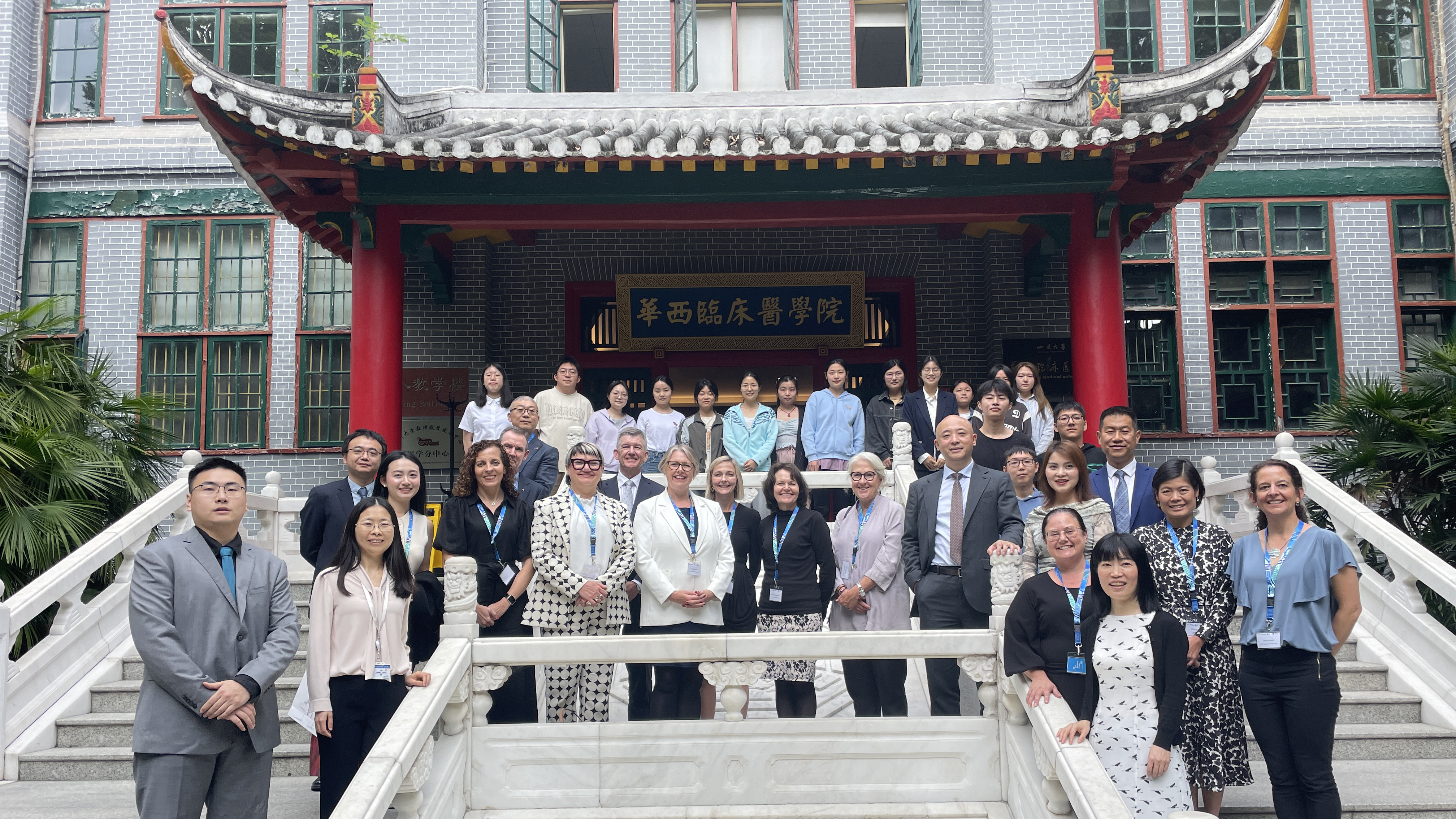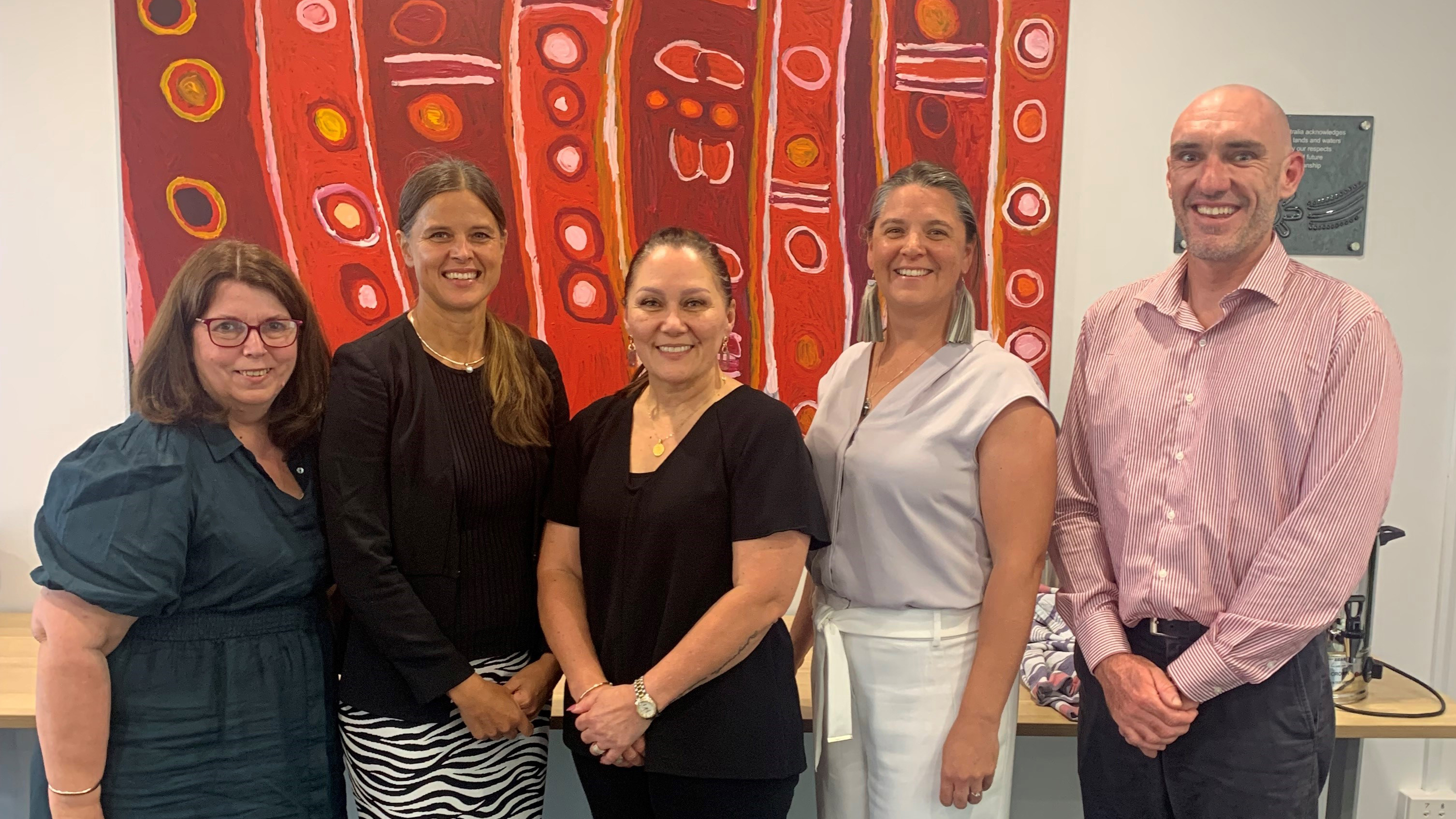A new imaging device was launched on Macquarie University’s campus today, helping researchers in the ARC Centre of Excellence in Cognition and its Disorders (CCD) and HEARing Cooperative Research Centre (CRC) better understand how the human brain processes information from a cochlear implant.
For the first time, scientists can use a well-established brain imaging technique called MEG, or magnetoencephalography, to measure brain function in recipients of cochlear implants, including young children. The new device overcomes the electromagnetic restrictions of cochlear implants, enabling researchers to gain valuable insight into this established and effective solution for people with hearing loss.
Distinguished Professor Stephen Crain, Director of the CCD, says the cochlear implant (CI) MEG system opens fresh avenues for research into the effects of hearing loss, and restoration of hearing on brain development and function.
“We have a unique window into the brain through MEG technology,” he says. “For seven years, CCD researchers have used MEG to understand how the brain processes sensations and perceptions, language and emotions. Now, for the first time, we will be able to extend this knowledge to understand how the brain adapts to a cochlear implant, especially in children, whose neural development is at a crucial stage.
“We know that early intervention yields the best cognitive outcomes for children, because brain plasticity is optimal in the first few years of life. Using the new MEG system, we plan to investigate how the brain is able to achieve so much more during this period using the same information. One of the first studies using the new MEG system will explore the effects of early intervention on auditory brain development in children with cochlear implants.”
The facilities in the CCD’s KIT-Macquarie Brain Research Laboratory have helped it become one of the world’s most advanced laboratories for brain research, with a suite of three MEG brain imaging systems – including, now, two world-first devices. The laboratory, based at the Macquarie University node of the CCD, also features a CSIRO-designed helium recovery system to support the MEG systems.
Significantly, the installation of the CI MEG device is also one of the first major outcomes of the Australian Hearing Hub, an initiative of Macquarie University that brings the country’s best hearing technology and research providers together with allied health organisations.
“This is a sensational example of what can be done through partnership,” says Associate Professor Jim Patrick, Chief Scientist at Cochlear Limited. “We saw the need for the next level of insight into our product, and were able to join with the expertise of the CCD, CSIRO, Kanazawa Institute of Technology and the HEARing CRC to make this happen. The recipients of our products benefit immeasurably from good quality, advanced research, and the potential impact for hearing health from this innovation worldwide is enormous.”
This innovative project was a joint venture by an interdisciplinary team of researchers in cochlear implant technology, hearing disorders, cognitive and language sciences, and brain imaging, to study the effects of hearing loss and cochlear implantation in the brain across the life span.
As a funding partner, the HEARing CRC’s Chief Executive Officer Associate Professor Bob Cowan is excited by the possibilities. “The CI MEG will for the first time provide clear insights into how the brain processes information from a cochlear implant. This knowledge will be invaluable in developing new cochlear implant speech coding strategies for tonal languages or music perception.”
The Australian Hearing Hub is an initiative of the Australian Government being conducted as part of the Higher Education Investment Fund and the Sydney Cochlear Implant Centre generously helped to share the Kecman family’s story.









